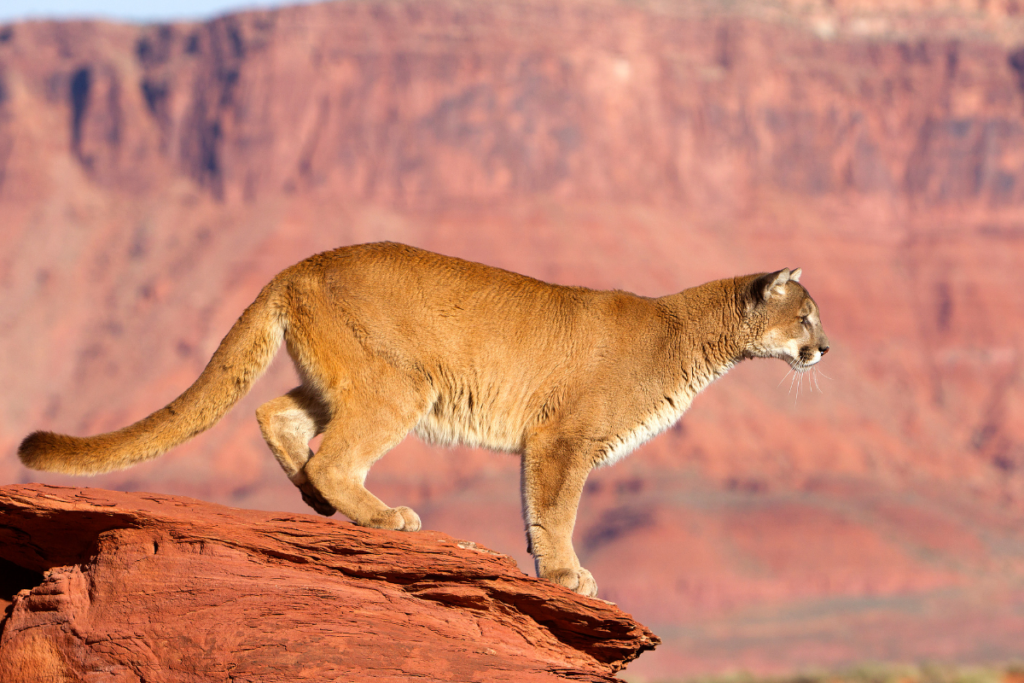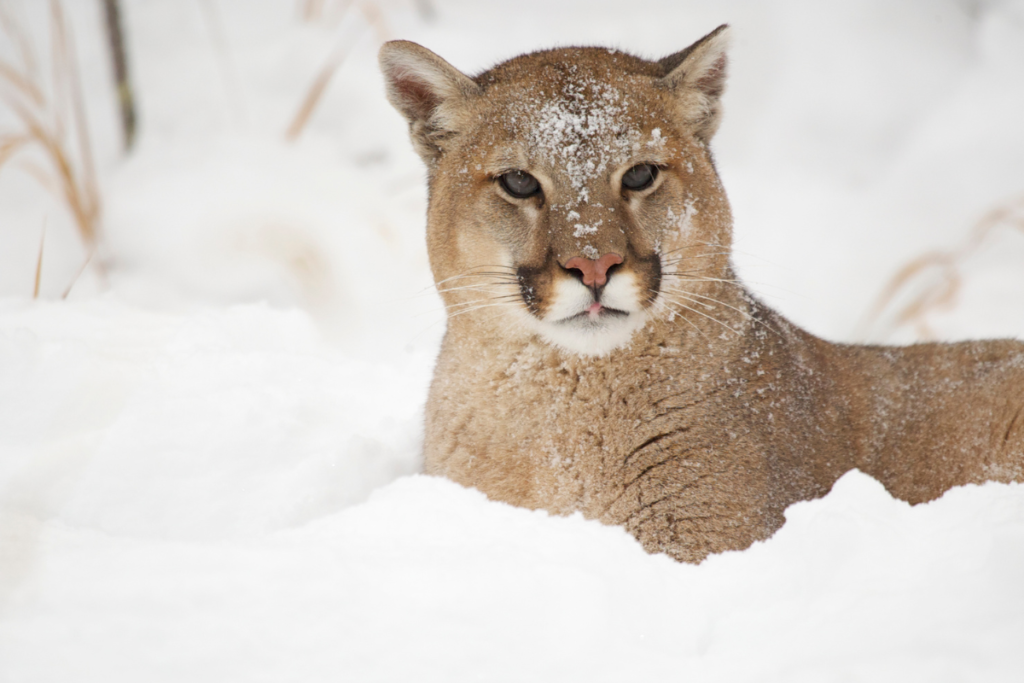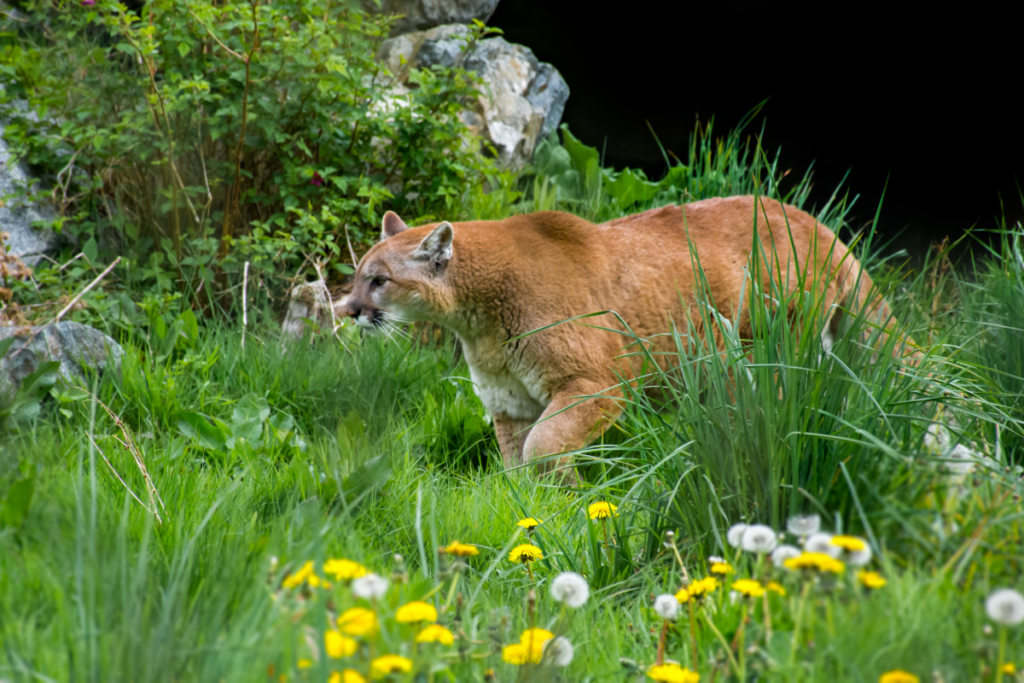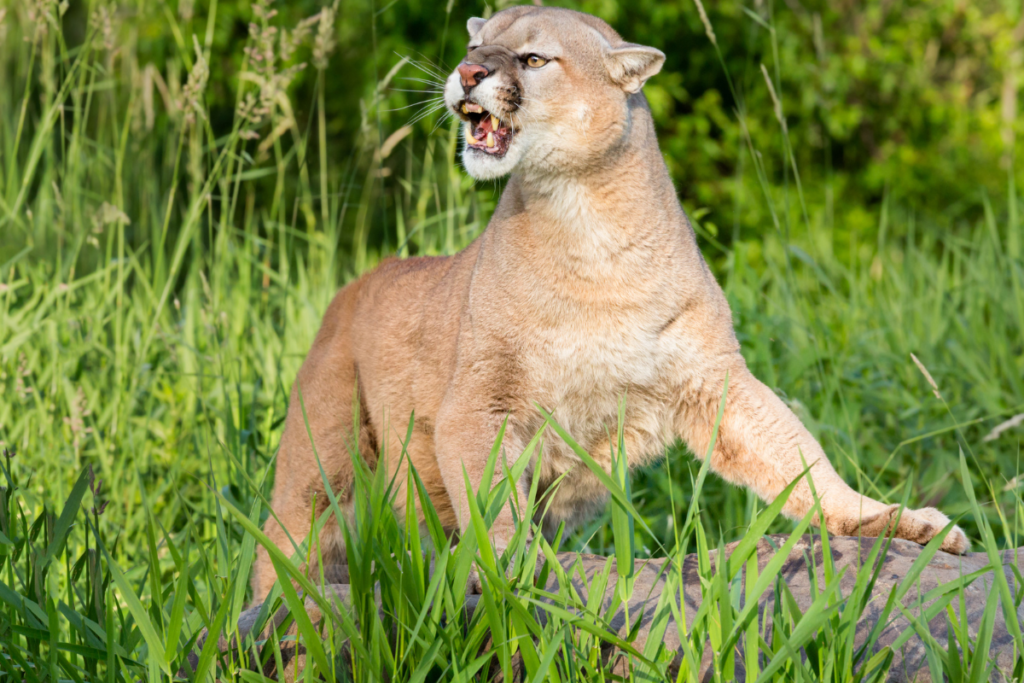
Mountain lions, also called cougars, pumas, or panthers, are among the most adaptable big cats in the Americas. They inhabit diverse habitats, from forests to deserts. Known for their elusive nature, these powerful predators have made a significant comeback in parts of the U.S., thanks to conservation efforts. This gallery explores state-by-state population trends, highlighting where these magnificent animals thrive and the factors influencing their presence.
California: A Stronghold for Cougars

California is home to one of the largest populations of mountain lions in the U.S., with estimates ranging between 4,000 and 6,000. These cats are most commonly found in the Sierra Nevada and coastal ranges. Protective legislation, like Proposition 117, has safeguarded their habitat and prohibited hunting, allowing the species to flourish. However, urbanization and roadways still need to improve for these stealthy predators.
Colorado: The Lion’s Playground

Colorado boasts a healthy population of mountain lions, estimated at 3,000 to 7,000. These agile cats thrive in the state’s rugged mountain ranges and forests. Effective wildlife management programs have ensured their coexistence with human communities. Sightings are frequent in areas like Boulder and Aspen, where lions sometimes wander close to urban edges, reminding residents of their shared wilderness.
Florida: The Rare Panther

In Florida, mountain lions take on the name “Florida Panther.” This subspecies is critically endangered, with fewer than 200 individuals remaining. Found mainly in the swamps and forests of southern Florida, these cats have faced habitat loss and collisions with vehicles. Conservation efforts, including wildlife crossings and protected lands, are helping the panther population slowly recover, representing a unique chapter in mountain lion survival.
Montana: A Mountain Lion Haven

Montana’s expansive wilderness offers an ideal home for mountain lions. The population, estimated at 2,500 to 3,500, roams across the Rocky Mountains and forested valleys. Hunting quotas are carefully managed to maintain ecological balance while preventing overpopulation. In Montana, the relationship between humans and lions underscores the importance of respecting these apex predators while ensuring safety for all.
Texas: A Lone Cat State

Mountain lions in Texas are primarily found in the Trans-Pecos region of West Texas. Their population, estimated in the low thousands, benefits from the state’s vast landscapes. Unlike many other states, Texas classifies mountain lions as non-game animals, meaning there’s no regulated hunting season. This status sparks debate among conservationists, but these cats continue to navigate the challenges of the Lone Star State’s arid terrain.
Utah: Where Mountains Meet Lions

Utah’s mountain lions thrive in the Wasatch and Uinta Mountain ranges. The population is estimated at around 2,500 to 3,000. The state employs strict management practices, balancing hunting and conservation. Efforts to educate the public about coexisting with mountain lions have reduced conflicts, while the state’s stunning landscapes remain a prime habitat for these solitary hunters.
Arizona: Desert Pumas

In Arizona, mountain lions adapt to the state’s arid deserts and rugged mountains. Their population is estimated to be between 2,000 and 2,700. Protected areas like the Grand Canyon offer safe havens for these cats. Despite their adaptability, encounters with humans are increasing as urban areas expand into their natural habitat. Arizona promotes education and safety measures to maintain harmony between humans and wildlife.
Oregon: Guardians of the Forest

Oregon’s lush forests and mountainous terrain are perfect for mountain lions, with an estimated population of 6,000. The Cascade Range and Blue Mountains are hotspots for sightings. Oregon has adopted a science-based approach to population management, ensuring a stable ecosystem. Wildlife corridors and public awareness campaigns further protect the cats and the communities that share their habitat.
South Dakota: Lions of the Black Hills

South Dakota’s Black Hills are a stronghold for mountain lions in the Midwest. The population, estimated at 300 to 500, thrives in the region’s dense forests. South Dakota employs a regulated hunting program to maintain ecological balance. Despite their relatively small range in the state, mountain lions remain an iconic symbol of the Black Hills’ wildness.
Washington: Mountain Majesty

Washington’s mountain lions thrive in the Cascade and Olympic Mountain ranges. The state’s population is estimated at 2,000 to 4,000. Wildlife officials emphasize the importance of minimizing human-lion conflicts through education and preventive measures. Washington’s diverse terrain, from dense forests to rugged peaks, ensures a rich habitat for these stealthy predators.
Nevada: Masters of the Desert

Nevada’s mountain lions navigate some of the harshest environments in the U.S., from arid deserts to rocky peaks. The population is estimated to be between 2,000 and 3,000. These resilient cats are experts at finding food and water in sparse landscapes. Nevada’s wildlife management focuses on ensuring the survival of mountain lions in an environment where resources can be scarce.
The Future of Mountain Lions

Across the U.S., mountain lion populations reflect a story of resilience and adaptation. From thriving in dense forests to surviving in arid deserts, these big cats embody the spirit of the wild. Conservation efforts, public education, and habitat protection are crucial for their continued survival. Humans can coexist with these majestic creatures for generations by understanding their behaviors and respecting their habitats.
Stay connected with us for more stories like this! Follow us to get the latest updates or hit the Follow button at the top of this article, and let us know what you think by leaving your feedback below. We’d love to hear from you!







